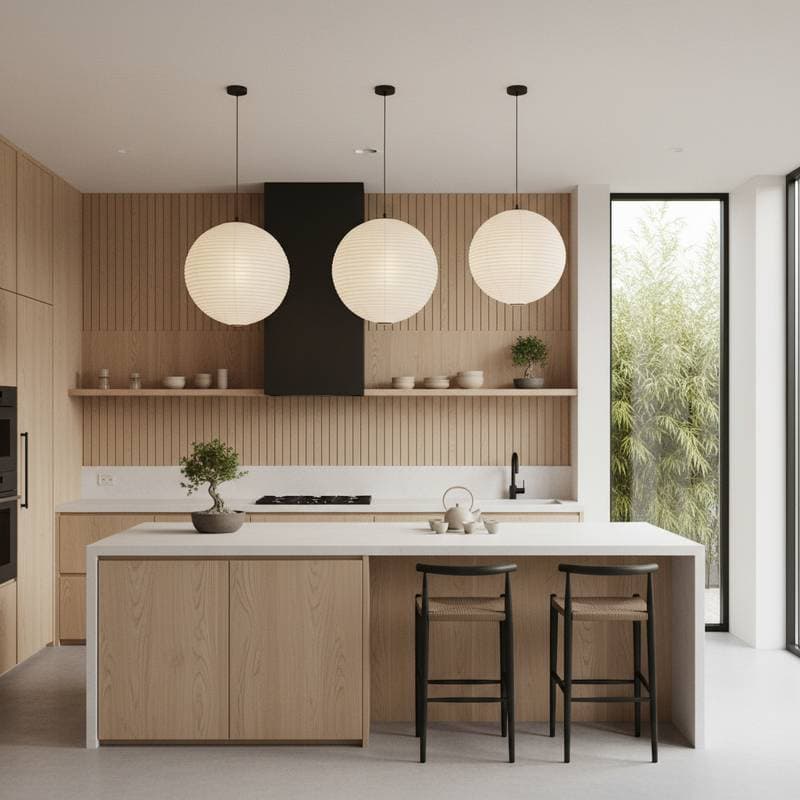Zero-Waste Kitchen Design: Keep Your Trash Bins Nearly Empty
Picture this: you finish preparing a hearty meal, clear the counter, and open your trash bin to find it almost empty. Vegetable scraps rest in a compost container, leftovers are tucked into reusable glass jars, and packaging waste is virtually nonexistent. This is the essence of a zero-waste kitchen, a practical and achievable goal for any home, regardless of budget or space constraints. With thoughtful design and small, intentional changes, you can transform your kitchen into a hub of sustainability without compromising on style or function.
Many homeowners aspire to reduce kitchen waste but feel overwhelmed by the prospect of redesigning their space. The key lies in balancing aesthetics, usability, and cost while making waste reduction second nature. This guide offers actionable strategies to build a zero-waste kitchen, complete with specific costs, effort levels, and measurable benefits, ensuring you can start small and scale up over time.
Core Components of a Zero-Waste Kitchen
Built-In Composting Solutions
Food scraps often account for the bulk of kitchen waste, piling up quickly in trash bins. Integrating composting into your kitchen design turns this waste into a resource while keeping disposal seamless and odor-free.
- Under-sink compost bins: These compact, pull-out units fit neatly into existing cabinetry, ideal for small spaces. Installation costs range from $100 to $300, depending on customization.
- Countertop compost containers: Portable and budget-friendly, these bins suit renters or those testing the waters. Prices typically fall between $25 and $75.
- Outdoor composting systems: For larger households, tumbler bins or stationary piles work well, costing $150 to $500 based on capacity and features.
Apartment dwellers can explore local food scrap collection programs or invest in indoor electric composters, which break down waste without outdoor access. Setting up countertop or under-sink options requires minimal effort, while outdoor systems or electric units might benefit from professional guidance to ensure proper placement and ventilation.
Durable, Sustainable Materials
A zero-waste kitchen prioritizes materials with longevity and recyclability, reducing the need for frequent replacements. Investing in sustainable surfaces and fixtures pays off over time, both environmentally and financially.
- Recycled paper composite countertops: These surfaces resist heat and wear while maintaining an eco-friendly profile, priced at $50 to $80 per square foot.
- Bamboo or reclaimed wood cabinets: Both options are renewable, repairable, and visually appealing, costing $150 to $300 per linear foot.
- Recycled metal hardware: Opt for durable finishes on handles and knobs to avoid premature replacements, often available at standard hardware rates.
While initial costs might exceed those of conventional materials, the durability translates to fewer renovations and less landfill waste, offering a clear return on investment for eco-conscious homeowners.
Efficient Waste Sorting Systems
Creating a zero-waste environment requires a streamlined approach to sorting trash, recyclables, and compostables. A dedicated system ensures everyone in the household participates effortlessly.
- Three-bin pull-out drawers: Allocate one bin for recyclables, one for compost, and one for landfill waste, with installation costs between $200 and $400.
- Labeling aids: Simple stickers or icons on bins clarify categories, preventing mix-ups, and cost less than $20 to implement.
Embedding sorting stations into your kitchen layout transforms waste management from a chore into a habit, significantly cutting down on misplaced items and contamination in recycling or compost streams.
Reusable Storage Alternatives
Single-use plastics, like bags and wrap, contribute heavily to kitchen waste. Switching to reusable options not only reduces trash but also saves money over time.
- Glass jars and containers: Perfect for storing leftovers or bulk goods, available for $10 to $50 depending on size and quantity.
- Silicone food covers: These replace plastic wrap for covering bowls, costing $15 to $30 for a set.
- Stainless steel straws and utensils: Durable and portable, often priced at $5 to $20 per set.
Transitioning to these alternatives requires minimal upfront effort, and the reduction in recurring purchases of disposables adds up to noticeable savings within months.
Safety and Compliance Factors
As you redesign for zero waste, certain upgrades demand attention to safety and local regulations. Electrical composters or new energy-efficient appliances may require dedicated circuits, so consulting a licensed electrician is essential to avoid hazards. If you install under-sink bins or greywater recycling systems, check plumbing codes and secure necessary permits to stay compliant. Additionally, ensure proper ventilation for new cooktops or ovens to maintain air quality and prevent buildup of fumes. Overlooking these details can lead to expensive fixes or legal issues, so prioritize professional input for complex installations.
Taking the First Steps
Begin your journey by assessing your current kitchen setup. Identify key waste sources, such as food scraps, disposable plastics, or outdated appliances that consume excess energy. Tackle the simplest change first, whether that means setting up a countertop compost bin or swapping plastic wrap for reusable silicone lids. Each adjustment, no matter how small, builds momentum toward a more sustainable space.
A zero-waste kitchen does not emerge overnight; it evolves through deliberate choices that align with your lifestyle and budget. Start with one or two elements, measure the impact on your waste output, and gradually incorporate additional features. Over time, these efforts combine to create a kitchen that minimizes environmental impact, maximizes efficiency, and reflects a commitment to a greener way of living.








